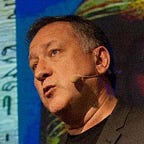The Laws of the Interface
As Henry Petroski put it, “artifacts evolve from artifacts, so do books from books” (1994:x). I started thinking about these laws in 1994 when I finished reading the Italian edition of Pierre Lévy’s Les technologies de l’intelligence. L’avenir de la pensée à l’ère informatique (1990). In this volume Lévy proposed a new interpretation of the /interface/ beyond the traditional /user interface/:
The interface refers to translation operations, to bringing heterogeneous environments into contact. In this sense, it evokes the communication (or transport) and the transforming processes necessary for the success of the transmission. The interface holds together the two dimensions of becoming: movement and metamorphosis. It is the operator of the passage (Lévy, 1992:190).
The pages that follow are inspired by a wide range of authors, disciplines and theories, from interaction design to Actor- Network Theory (ANT), Human-Computer Interaction (HCI), complexity, sociology of technological change, economy, and semiotics. Linguistics, biology, engineering and anthropology have also left their mark on more than one law. In this text I propose an analysis of interfaces focused on macroprocesses, in which the biological dialogues with the technological. To understand the ecosystem and evolution of interfaces I have borrowed concepts and interpretive models from the bionatural sphere and applied them to the technocultural sphere. Therefore, the two main objectives of The Laws of the Interface are:
- To rethink the concept of /interface/ and extend its use beyond digital technology.
- To analyze the interface from an eco- evolutionary model to identify a set of emerging laws.
Basically, what interests me most is to propose a model of technological change that dialogues with models of biological change but that, at the same time, can be applied to other spheres, for example social, political or educational.
Why Laws?
In the scientific domain a ‘law’ is a ‘statement of fact to the effect that a particular natural or scientific phenomenon always occurs if certain conditions are present’. In this sense the ‘law’ is almost similar to a ‘principle’: ‘a general scientific theorem or natural law’ (Oxford Dictionary). This scientific aura around the law does not mean that it is absolutely certain: it just means that the evidence tends to support it.
Laws were made to be broken. That’s the way knowledge evolves. Nobody loses if we break a knowledge law; everybody wins if we ask a new question, search for a new answer or generate a new law. Nobody should have the last word in any conversation (and knowledge is one of the most fascinating social conversations of humankind).
Laws for whom?
The Laws of the Interface are a basis for thinking but also for doing. The reader will not find in this text a set of guidelines for designing better interfaces or a list of usability tips’n’tricks; rather the reader will learn how interfaces are born, reproduce and evolve. In this text I will describe many use situations and reflect on a series of basic principles that seem to repeat in different periods, scales, societies and technologies. The Laws of the Interface should be considered a support for conceptual-aided thinking. Thinking about what? Thinking about the evolution of the socio-technological network.
Towards a Theory of Interfaces
The path from a primary application of the eco-evolutionary metaphor to the development of more sophisticated theoretical models of technological change is not direct. In this context, the concept of /interface/ could become one of the necessary keywords for understanding the transformations of contemporary society. If in the 1950s everything was /structure/, in the 1960s it became /sign/, then in the 1980s /text/ was presented as the key concept for understanding an infinity of phenomena. Could the /interface/ be one of the keywords of the 21st century?
Finally, this Theory of Interfaces that we are in the process of building is itself a great theoretical interface that connects the contributions and organizes the reflections of an extensive network of intellectuals, scientists, designers and creators who, in the last two centuries, have been reflecting on the evolution of technological species and designing new places of interaction.
Note: This text is a synthesis of my book Las Leyes de la Interfaz published by Gedisa in 2018.
Next > First Law. The interface is the place of interaction
References
Lévy P. (1992). Le tecnologie dell’intelligenza. Bolongna: Synergon (Orig. edition: Les technologies de l’intelligence. Pariis: La Decouverte, 1990).
Petroski, H. (1994). The Evolution of Useful Things. New York, NY: Vintage Books.
Scolari, C.A. (2018). Las Leyes de la Interfaz. Diseño, ecología, evolución, tecnología. Barcelona: Gedisa.
